Background
LADWP is working to reduce our reliance on higher cost imported water. To do so, the LADWP is pursuing a multi-pronged initiative that includes stormwater capture, water conservation, recycled water, and groundwater remediation.
Stormwater capture is an important element of the LADWP’s overall plan to enhance our local water supply. The principle involves capturing precious rainfall and runoff from open space and urban lands for either direct use or allowing the water to infiltrate into groundwater basins for future use.
Today, on average, more than 27,000 acre-feet (more than 8.8 billion gallons) of stormwater is captured each year at centralized spreading grounds where it recharges the San Fernando Groundwater Basin. Stormwater runoff that cannot be contained at these facilities is discharged to the Pacific Ocean via streams, rivers, and storm drains. LADWP plans to continue implementing stormwater capture projects that decrease the amount of runoff lost to the Pacific Ocean. Projects include large scale spreading grounds enhancements and smaller scale green streets, rain gardens, and rain barrels.
To learn more about how stormwater capture fits into the LADWP’s efforts to secure a sustainable water supply for Los Angeles, please view the 2020 Urban Water Management Plan.
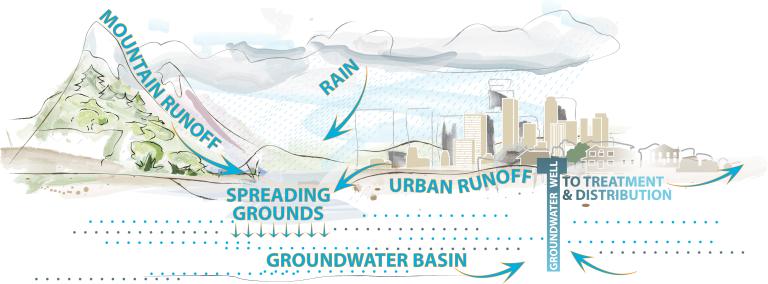
Centralized Stormwater Capture Facilities
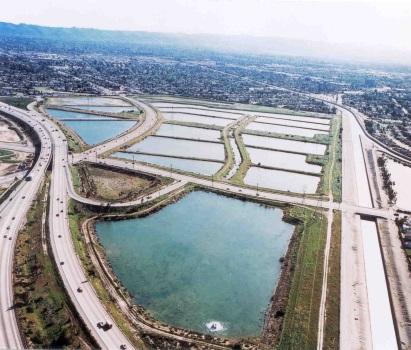
Centralized Stormwater Capture Facilities are large-scale operated facilities that are designed specifically to infiltrate large amounts of runoff into underlying groundwater aquifers. LADWP has entered into several cooperative agreements with the Los Angeles County Flood Control District to assist with spreading facilities that recharge groundwater for the City of Los Angeles’ future use. Improved storage and intake capacities at the Hansen, Tujunga, Pacoima, and Lopez Spreading Grounds will facilitate increased recharge into the San Fernando Groundwater Basin. Projects at the Big Tujunga Dam and Pacoima Dam will increase the storage capacity upstream of the spreading facilities, allowing for controlled flow releases and maximizing the amount of water diverted to spreading facilities.
Learn more about the Tujunga Spreading Grounds Enhancement Project
Distributed Stormwater/Runoff Capture
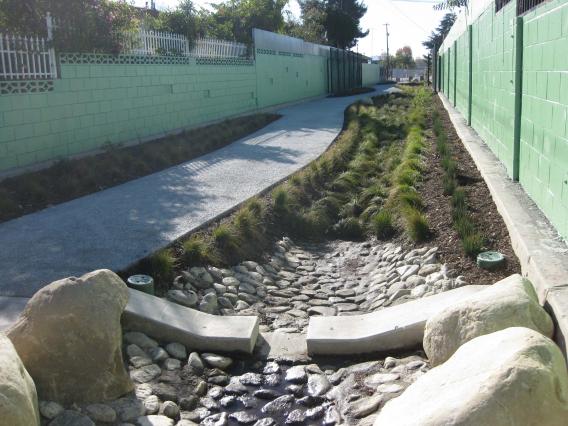
Distributed stormwater/runoff capture refers to capturing localized dry and wet weather runoff. Dry weather runoff is any runoff that occurs in the absence of rainfall from inefficient irrigation systems, overwatering, A/C condensate, or other wasteful outdoor water use practices, while wet weather runoff occurs as a direct result of rainfall. Wet weather runoff represents a significantly larger volume of water than dry weather runoff. Distributed projects aim to capture local runoff to replenish underlying aquifers, reduce potable water demand, and alleviate local flooding. Distributed projects are smaller scale projects that can provide water supply benefit at the neighborhood and even residential level. Examples of projects include infiltration swales, pervious pavement, rain gardens, and rain barrels. LADWP offers rebates for rain barrels that can capture stormwater for direct reuse at your residence. For more information on the rain barrel rebate, please visit SoCal Water$mart.
Planning for the Future
Historically in Los Angeles, the storm drain systems are designed to quickly direct rainfall and runoff from impervious surfaces into the storm drain system and ultimately the Pacific Ocean. The system was designed to protect life and property from flood impacts.
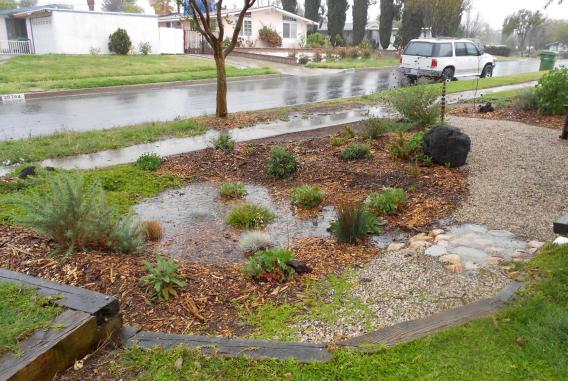
However, enhancement of existing centralized facilities, the implementation of new centralized facilities, and distributed stormwater best management practices (BMPs) including rain barrels and cisterns, permeable pavers, rain gardens, bioswales, and infiltration basins beneath street medians and parkways can help capture runoff and stormwater instead of letting it flow out to the storm drains, the rivers, and the ocean.
LADWP has completed the Stormwater Capture Master Plan, which is an outline for policymakers that explains the LADWP’s strategies for the next 20 years to implement stormwater and watershed management programs, projects, and policies in the City of Los Angeles to contribute to a more sustainable local water supply.
Final Documents
Related Program
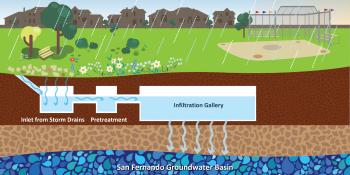
Stormwater Capture Parks Program
In partnership with the Department of Recreation and Parks and the Department of Public Works, LADWP has developed an innovative Stormwater Capture Parks Program to collect rainwater and urban runoff at nine local parks in the East San Fernando Valley.
Rain Barrels and Cisterns
Interested in a rain barrel or cistern rebate? Please visit SoCal Water$mart.
Contact Us
For more information on the Stormwater Capture Program, please fill out our Contact Us Form.